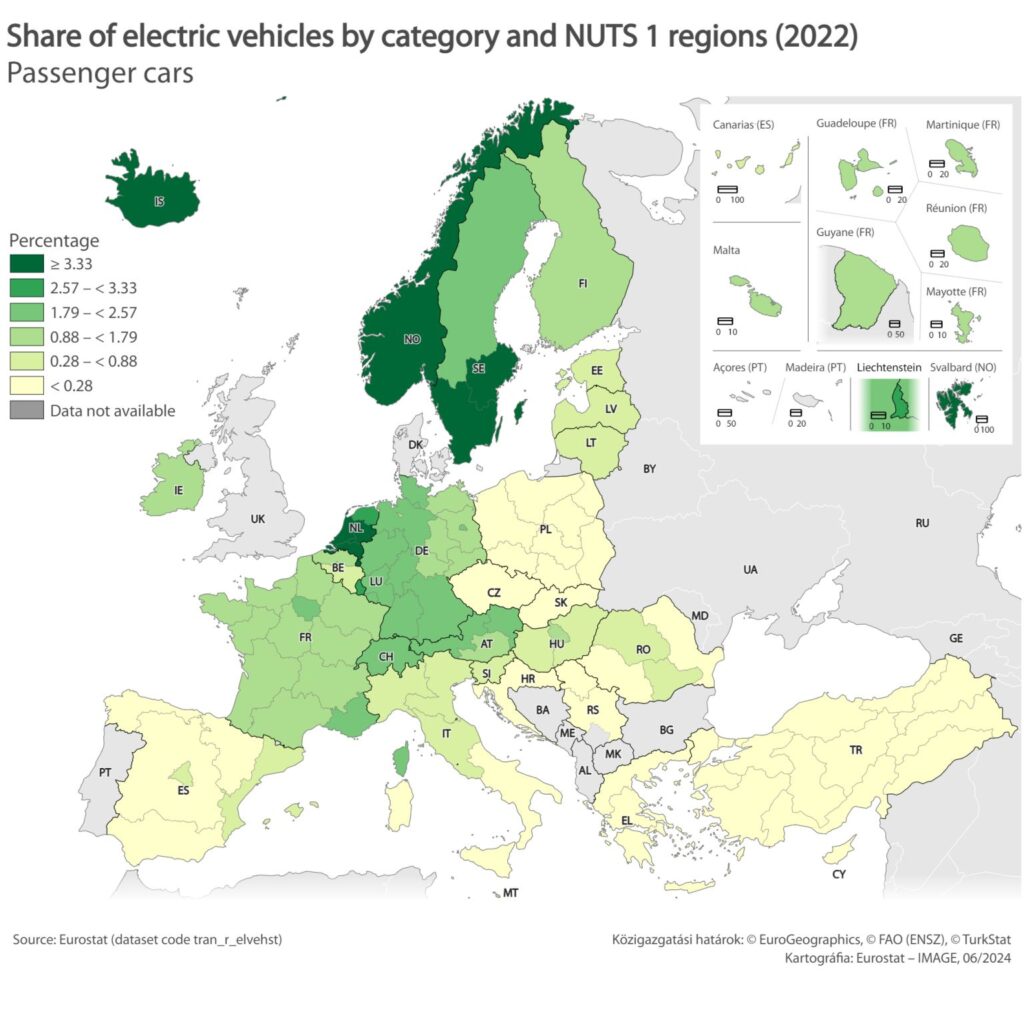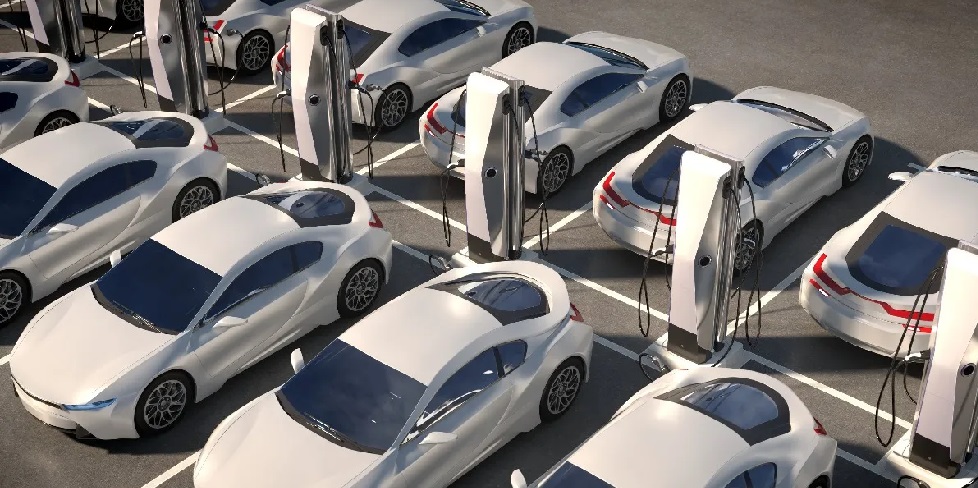A few days ago, Eurostat published a series of data that provide detailed information about the progress of electromobility in different regions of Europe.
This report emphasizes the importance of having adequate infrastructure and effective support policies to promote the purchase of electric vehicles (EVs).
The truth is that the data provided clearly demonstrate that those countries with well-developed charging networks and strong incentives show higher adoption rates of zero-emission cars.
A clear example is Norway, a leader in the green transition, reporting 709,960 electric vehicles in its territory, with regions like Oslo and Viken standing out.
Regarding charger availability, the Nordic country has a vast deployment, with 17,314 alternating current (AC) charging points and 8,429 direct current (DC) charging points installed.
Moreover, Sweden ranks among the top-performing countries in the continent, especially in areas like Stockholm and Västra Götaland, which are at the forefront of zero-emission cars adoption.
The Scandinavian nation boasts 36,460 AC chargers and 5,751 DC charging units for its 306,786 EVs.
Another distinguished European territory is Iceland, with the Reykjavík area leading.
The northern European state currently has 26,144 electric vehicles, a significantly meaningful number considering that according to the latest census in 2022, it has a population of 382,003.
Additionally, it has 1,443 AC and 283 DC charging devices.

Meanwhile, in Western Europe, the Netherlands stands out with a notable incorporation of EVs, reaching a total of 470,006 registrations in the first quarter of the year, especially in the regions of North Holland and South Holland.
Currently, the country has 155,063 AC and 4,388 DC charging points.
For its part, Germany’s regions of Bavaria, Baden-Württemberg, and North Rhine-Westphalia show notable growth.
The country positions itself as one of the most outstanding states, with 1,438,103 registered EVs.
Regarding charging points, Germany currently has 106,679 AC and 26,657 DC chargers.
However, given that the electric vehicle fleet is so large, more stations need to be installed.
On the other hand, in France, Île-de-France and Auvergne-Rhône-Alpes stand out for their significant adoption of electric vehicles.
Following in the footsteps of its neighboring country, the state governed by Emmanuel Macron has 987,821 zero-emission cars, which can recharge their batteries at 177,555 AC and 21,116 DC chargers.
Regarding the more lagging territories, especially in Southern and Eastern Europe, Spain has shown considerable advances in the adoption of electric vehicles, albeit to a lesser extent, particularly in the regions of Catalonia and Madrid.
Spain stands out with a fleet of 176,553 registered electric vehicles and, in terms of charging infrastructure, the country has 22,245 AC and 7,208 DC stations.
Italy is also positioning itself as an expanding market, with Lombardy and Lazio as key areas for the development of electromobility.
It currently registers 246,843 EVs on the road and has 39,344 AC and 6,719 DC charging devices.
In Poland, the regions of Masovia and Silesia have high acceptance rates of these vehicles. The country has a notable presence of 56,270 zero-emission cars.
Additionally, Poland has a charging infrastructure that includes 4,938 AC and 2,072 DC chargers.
Finally, in Hungary, the Central Hungary region stands out for its significant adoption of electric vehicles.
Compared to the mentioned countries, the Danube nation is at a less advanced stage in the adoption of EVs, with a fleet of 50,070 units.
Its charging infrastructure also shows initial development, with just 2,992 AC and 725 DC devices, indicating a significant growth potential in the electromobility sector.
Read more: Crisis alert: two Chinese eMobility companies abruptly withdrawing from Europe








